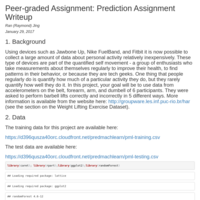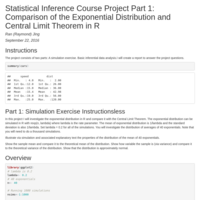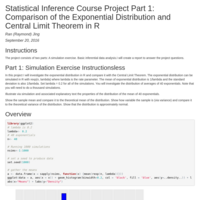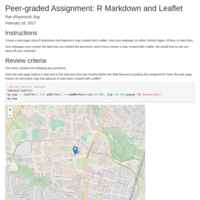Recently Published

Practical-Machine-Learning---Peer-Graded-Assignment-Prediction-Assignment-Writeup
Using devices such as Jawbone Up, Nike FuelBand, and Fitbit it is now possible to collect a large amount of data about personal activity relatively inexpensively. These type of devices are part of the quantified self movement – a group of enthusiasts who take measurements about themselves regularly to improve their health, to find patterns in their behavior, or because they are tech geeks. One thing that people regularly do is quantify how much of a particular activity they do, but they rarely quantify how well they do it. In this project, your goal will be to use data from accelerometers on the belt, forearm, arm, and dumbell of 6 participants. They were asked to perform barbell lifts correctly and incorrectly in 5 different ways. More information is available from the website here: http://groupware.les.inf.puc-rio.br/har (see the section on the Weight Lifting Exercise Dataset).

Statistical Inference Course Project Part 1: Comparison of the Exponential Distribution and Central Limit Theorem in R
In this project, I will investigate the exponential distribution in R and compare it with the Central Limit Theorem. The exponential distribution can be simulated in R with rexp(n, lambda) where lambda is the rate parameter. The mean of exponential distribution is 1/lambda and the standard deviation is also 1/lambda. Set lambda = 0.2 for all of the simulations. You will investigate the distribution of averages of 40 exponentials. Note that you will need to do a thousand simulations.Illustrate via simulation and associated explanatory text the properties of the distribution of the mean of 40 exponentials.

Reproducible Research: Peer Graded Assignment Course Project 2 - U.S. National Oceanic and Atmospheric Administration's Storm Data Analysis
This project involves exploring the U.S. National Oceanic and Atmospheric Administration's (NOAA) storm database. This database tracks characteristics of major storms and weather events in the United States, including when and where they occur, as well as estimates of any fatalities, injuries, and property damage. Data:National Weather Service Storm Data Documentation



